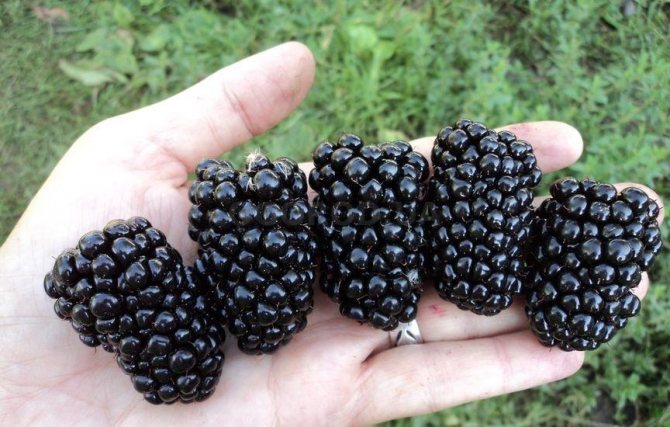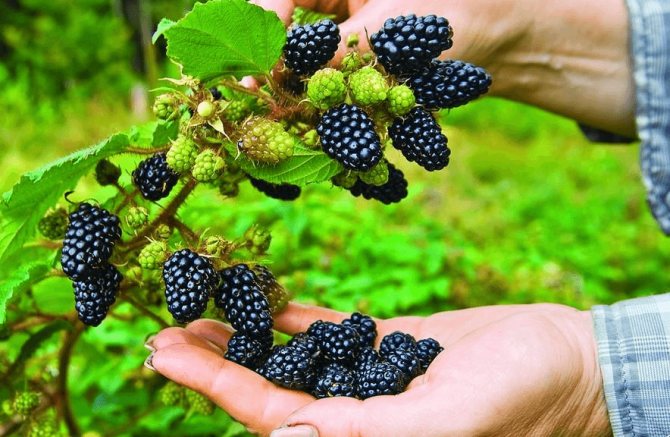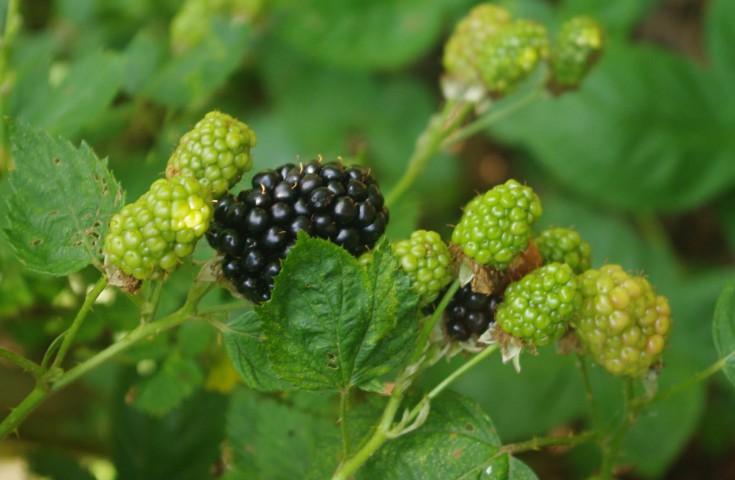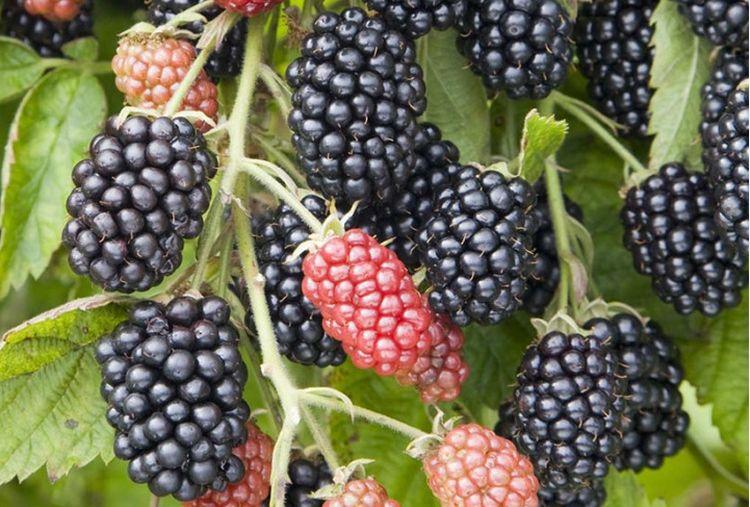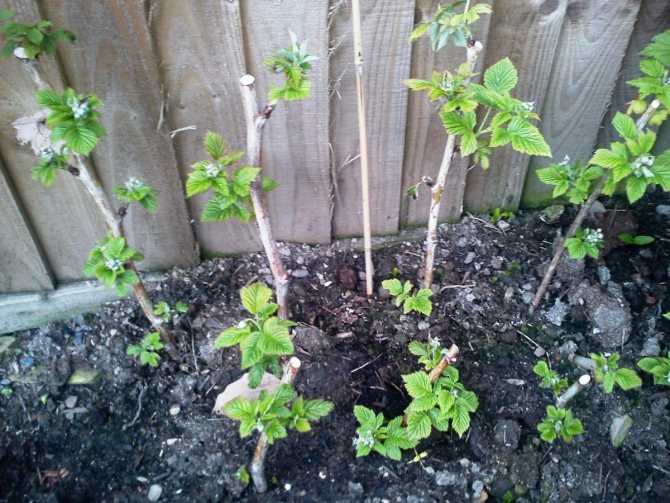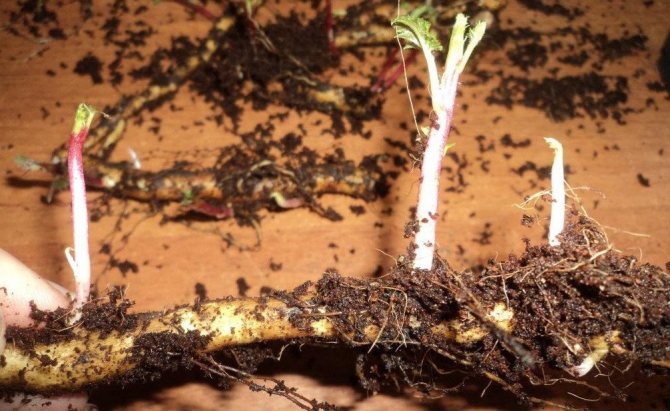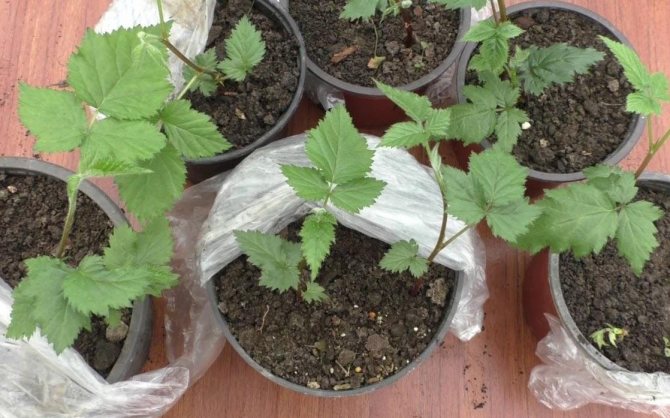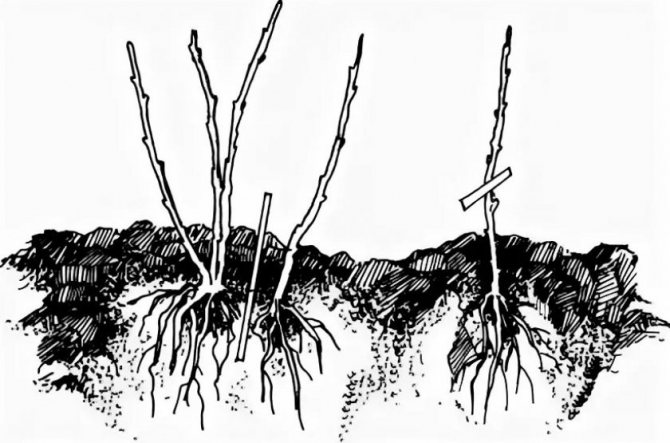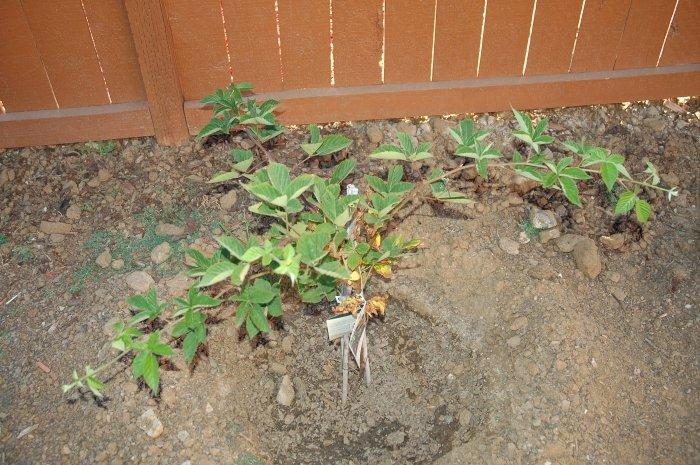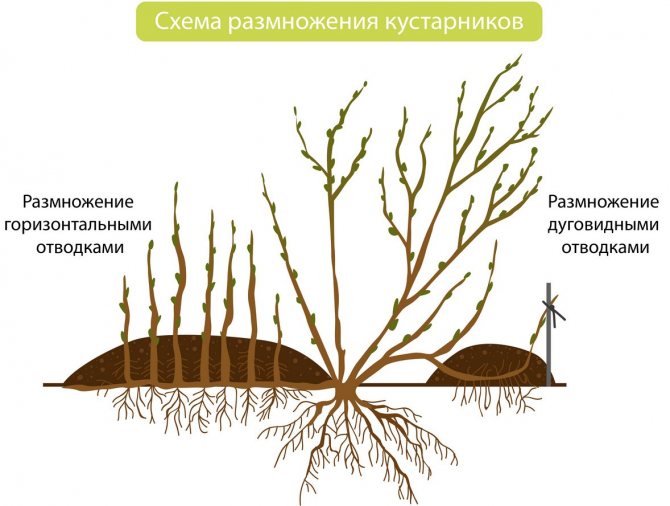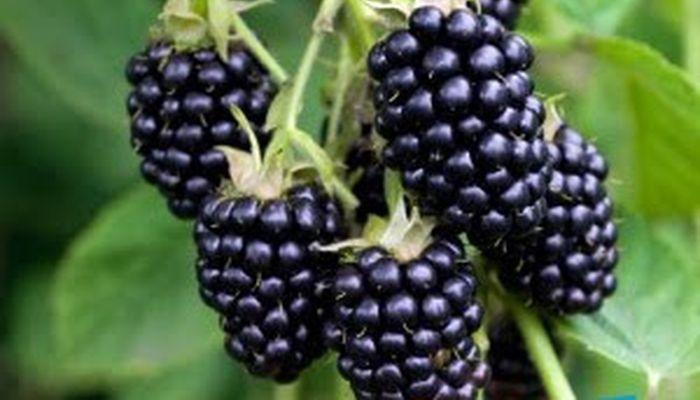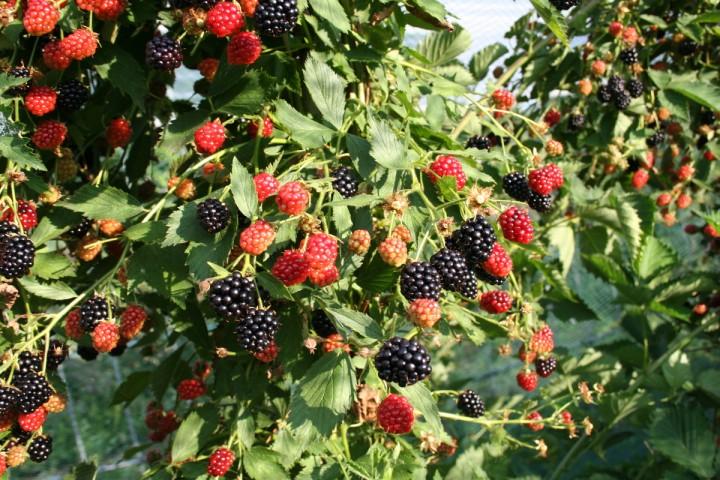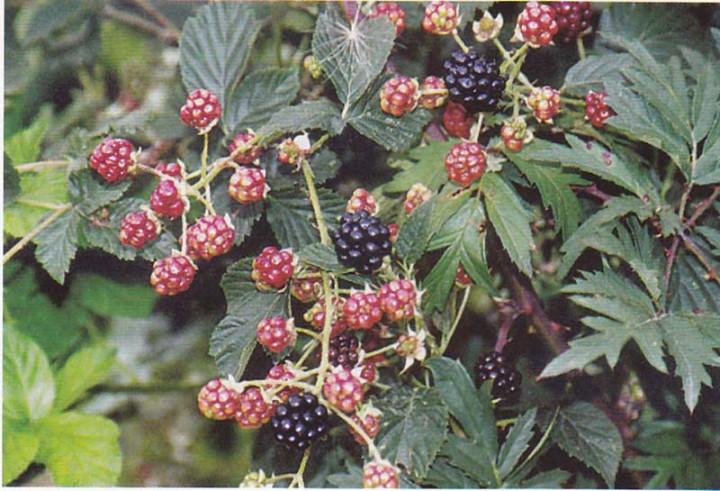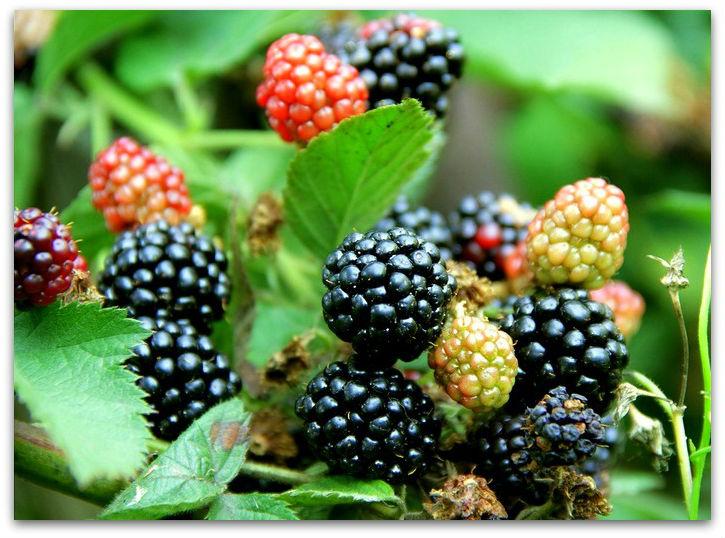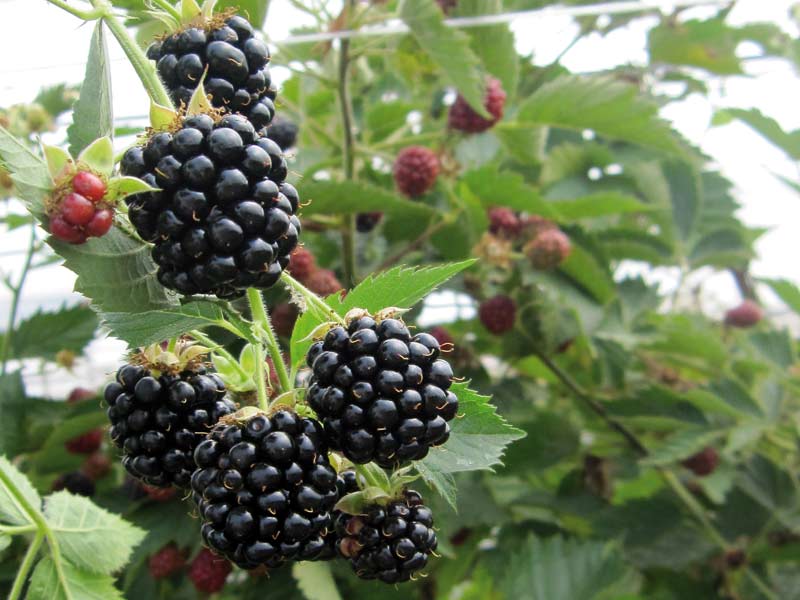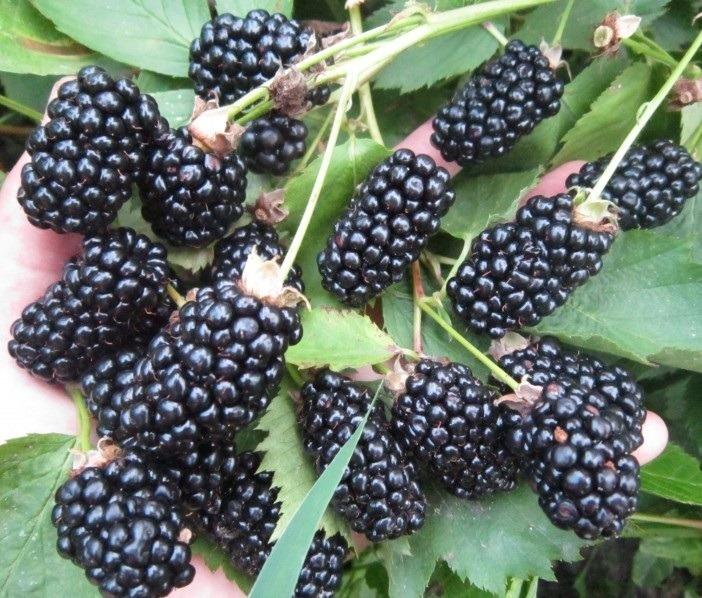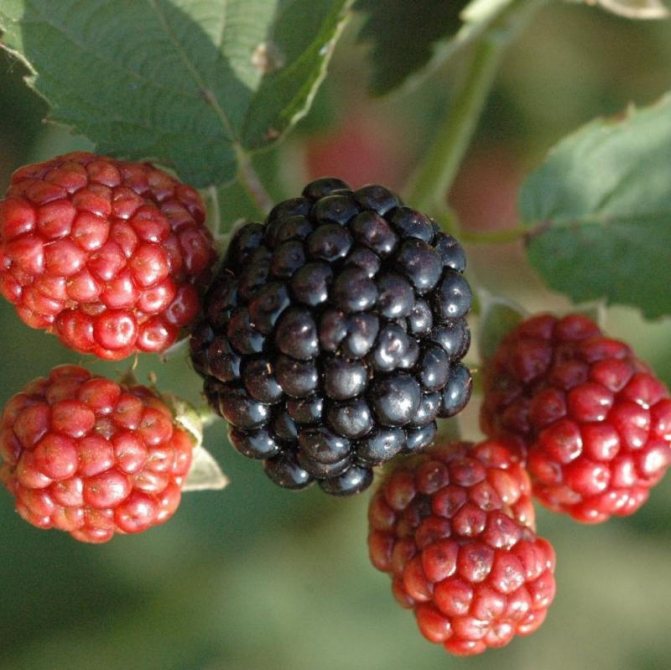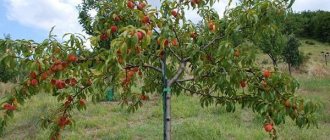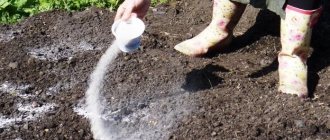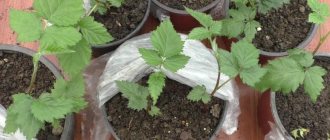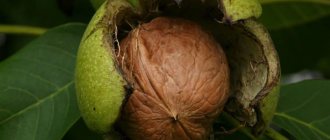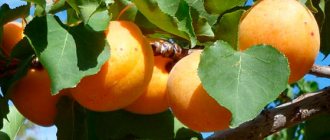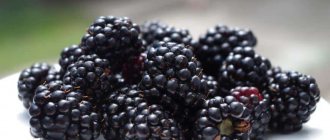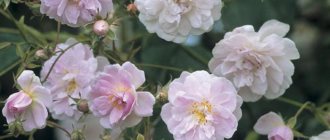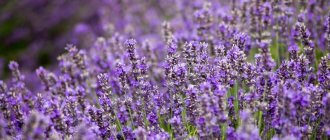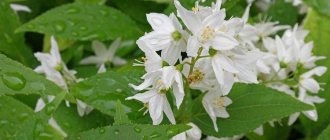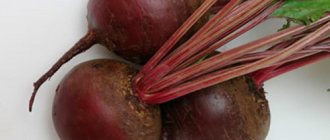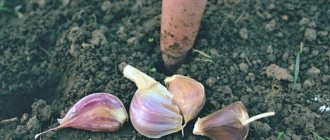Characteristic of blackberry thornless
A shrub with slightly oblong berries, mostly straight, upward-extending shoots. Sometimes the sprouts are spread on the ground. The fruits are mostly dark in color, but there are varieties with red or yellow berries. Blackberries bloom from the second month of summer. This late flowering prevents the inflorescences from freezing during spring frosts.
Blackberries are distinguished by their abundance of crops. The combination of vitamins and minerals that are part of the berries endows it with healing properties. Thornless blackberries are rich in carotene and contain potassium, calcium and sodium. The berry is also endowed with magnesium, iron, phosphorus, nickel, copper and barium and chromium.
The fruits of perennial shrubs are famous for the presence of fructose, glucose, as well as organic acids, fiber and pectins.
Such berries have medicinal qualities:
- have antipyretic features;
- improve metabolism;
- strengthen the immune system;
- restore the work of the gastrointestinal tract.
The juice of these healing fruits heals wounds and many skin diseases. And the leaves of the bush are used as an astringent diuretic and anti-inflammatory agent.
Occasionally, people who eat blackberries may experience vomiting and an upset stomach. Such symptoms are caused by allergic effects and berry intolerance in some cases.
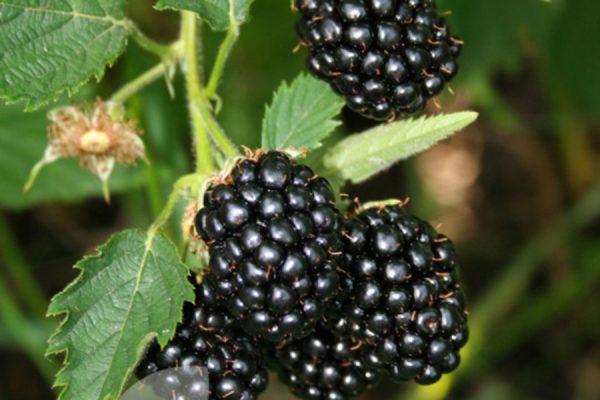
Thornless Blackberries
Weeding, loosening, mulching
In the first years, green manures or row crops can be grown between bushes or rows of blackberry bushes. Further, the land near the bushes should be kept under black steam.
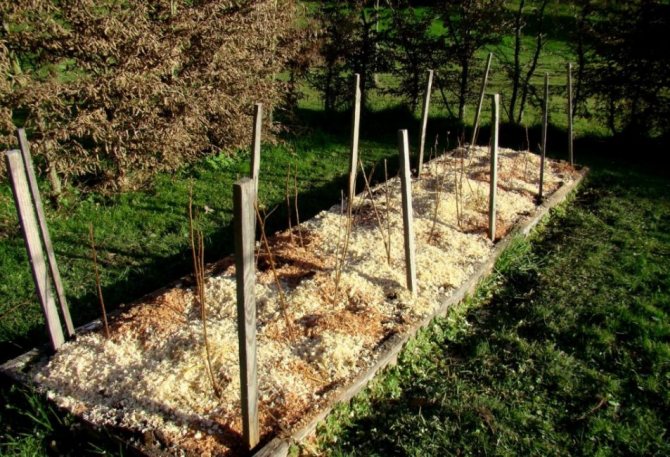

Sawdust mulching
If weeds appear near the plant, they must be promptly removed. It is necessary to loosen the soil once a month from spring to autumn, the depth of loosening is 10-12 cm. In the immediate vicinity of the bush, the depth of loosening is higher - up to 6-8 cm.
If it is possible to mulch the land on the site with pebbles, gravel, straw, hay, sawdust, needles, fallen leaves or other improvised materials, then the problems of weeds and loosening will disappear automatically. And if you use compost for mulching, then the plant will receive an additional source of nutrition, which is especially important during the flowering period.
Cooking and caring for bushes in winter
Blackberries are not very frost-resistant and preparing the plant for winter is of great importance. The berries of this culture are formed on the shoots of the last year, and the freezing of the upper part of the bush leads to a lack of harvest.
Before the cold weather, shoots that have borne fruit for two years are removed. Extra new branches are removed. To avoid excessive stretching of the bushes in height, you should pinch the upper parts of the stems. This action will allow the processes on the sides to develop and gain strength. Old stems are cut at the root so that pests can settle on them.
To avoid the spread of parasites, cut branches should be burned with the debris. After processing, sawdust or peat is poured under the bushes, which provides the plant with moisture and protects the root system from freezing. All varieties of blackberries, including frost-resistant ones, need shelter for the winter.Sometimes the soil near the bushes is covered with roofing material, corn leaves or hay.
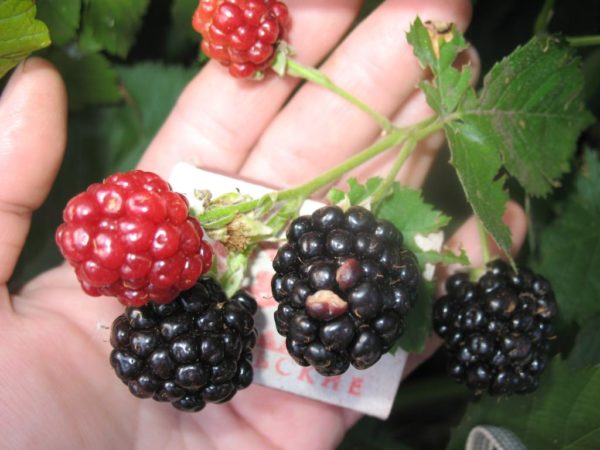

Ripe navajo blackberries
Pest attacks and mineral deficiencies
Blackberries are attacked by insects, which are also found in raspberries, but pests that eat wild hips, strawberries and roses are added to them. Let's try to sort them by area of harm:
- root system: bear (larvae and adults), beetle larvae;
- leaves: blackberry and raspberry aphids, several raspberry sawflies (leaf, forest, field, variegated, prickly) and spider mites;
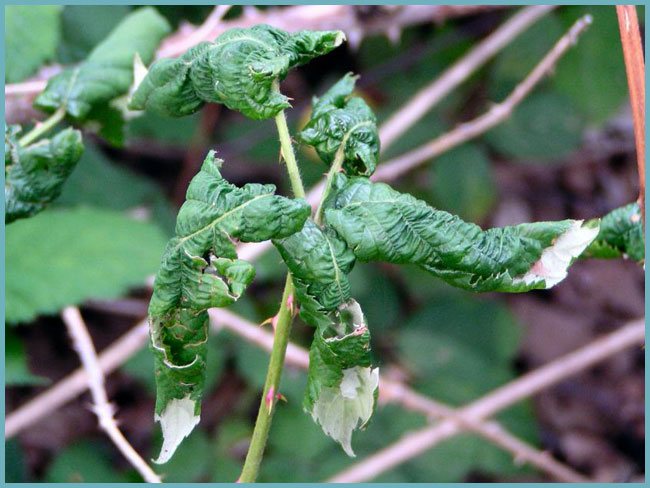

Blackberry aphid defeat
- shoots: raspberry stem fly, raspberry walnut;
- buds, ovary, fruits, flowering: raspberry beetle, kidney moth, strawberry weevil.
Copper sulfate is suitable for combating many pests. Insect control by growing other plants in the aisles has also become very popular. So, growing onions in the rows of raspberries and blackberries will help get rid of ticks, aphids and caterpillars.
Advice! To study each pest in more detail, use a selection of photos.
In addition to insects that eat the plant itself, blackberries may suffer from a lack of one or another mineral. Its acute deficiency is visible on the stems and leaves of the plant. The shortage is manifested as follows
- Iron. Leaves turn yellow, chlorosis begins.
- Nitrogen. It is manifested by fragility of stems and foliage, accompanied by chlorosis. Flowering is reduced, the growth of shoots slows down. The fruits become smaller and deformed.
- Potassium. It is accompanied by the appearance of a brown rim on the edge of the leaf plate. The berries ripen unevenly, the leaves turn pale, and may acquire a bluish tint.
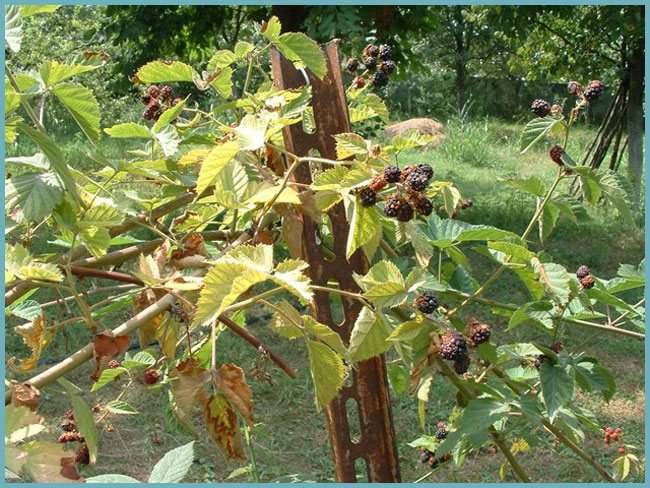

Iron deficiency sign
- Calcium. First of all it appears on young leaves. They turn yellow. In this case, the old ones do not change color. Apical buds die off, shoots dry up. The ovary falls off.
- Magnesium. It is manifested by chlorosis of the leaves with redness between the veins. Leaves die off and fall off.
- Copper. The growth of young shoots slows down. The upper buds die off, and the seeds practically do not develop in the berries.
- Phosphorus. The leaves take on a bronze tint. Ovary and maturation occur with a delay of several weeks. Leaves fall prematurely.
In order for a healthy and prolific blackberry to grow in your garden, at the first manifestation of a lack of trace elements and minerals, apply complex fertilizers. Remember that the amount of harvest that the plant will thank you at the end of the season depends only on attention and care.
How to plant a blackberry correctly: video
Growing blackberries: photo
Blackberry breeding methods
Breeding of thornless blackberries is carried out in several ways:
- Seed cultivation - an easy way of sowing seeds in the ground. This process requires watering and fertilizing. Seed breeding does not preserve the varietal characteristics of the crop.
- Propagation by rooted tops or green cuttings - the procedure for plucking the processes with seals at the ends. This method is performed by sprinkling the shoots with earth until they are completely rooted. Subsequently, the sprout, ready for independent life, is separated from the adult bush.
- Breeding with green summer or autumn shoots, who are already numb. This method can also be performed with cuttings with formed roots in greenhouses. To do this, you need to place the roots horizontally in the ground for at least a year. Landing is performed at a depth of about ten centimeters.
- Removing blackberries using shoots begins in July. To do this, it is necessary to spread long branches around the shrub, without separating them from the parent plant. Several cuts are made on the shoots with a sharp blade. All sprouts are sprinkled with soil at a depth of ten centimeters, leaving the top with leaves.Roots grow under the buds in the depressions, and young shoots form on top. In the fall, the sprouts are separated and transplanted to a specific location.
- Reproduction by air layering produced by wrapping the grafted places with cellophane. Earth is poured into the entwined material, and the entire structure in the form of a sleeve is tied across. Moisture is supplied through an injection with a syringe. Through the film, you can see the stages of development of root processes. After a month, cuttings with roots can be separated and planted.
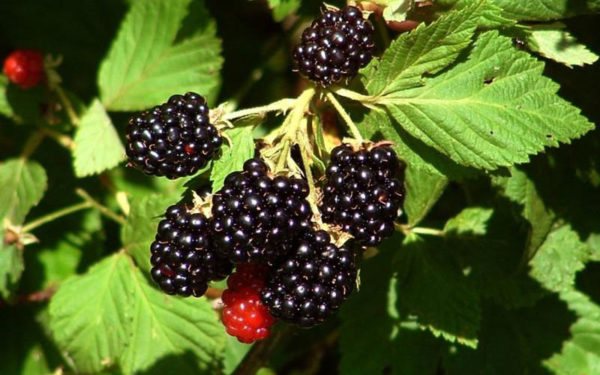

Blackberry Smutsttstem
Soil preparation
The soil for growing blackberries is prepared within 2-3 years. In a place designated for a berry bush, green manures and vegetables are planted, the earth is well fertilized with organic matter. It is important that the soil is well-drained and nutrient-dense by the time of planting.
Planting blackberries in the Moscow region is carried out in the spring, so preparations begin in advance in the fall. The soil is checked for acidity (for blackberries, this indicator should be at least pH6), the content of micronutrients. If the medium is alkaline, the acidity is increased with ferrous sulfate or sulfur. It is recommended to lower the pH by adding lime.
Then the top layer is loosened to the depth of the bayonet shovel. Weed roots and stones are removed from the ground. Humus is smoothed onto the dug soil. Manure or bird droppings will do. The thickness of the layer should be about 5-10 cm, about half a bucket per 1 square meter. The soil is mixed again and leveled with a rake and watered abundantly.
Do not neglect mineral fertilizers. Immediately after planting, blackberry seedlings need phosphorus, calcium and potassium, which will help the plant adapt, actively grow and bear fruit.
The fertilized soil is covered with a layer of mulch. Straw or dry grass is suitable, which will retain heat and activate internal processes. The soil is left alone until spring, and with the onset of warmth, garden blackberries are planted.
Thornless Blackberry Varieties
Recently, some varieties of thornless blackberry have enjoyed considerable popularity.
Loch Ness
Loch Ness - a widespread variety that is famous for its rich productivity. Berries weigh up to five grams and have excellent taste. Fruits are harvested from mid-August until the first frost. The crop is well preserved and does not deteriorate during transportation.
Thorn Free
Thorn Free - a high-yielding variety that has a strong massive bush. Shoots spread out and form large dark berries weighing about five grams. The fruits begin to sing in July. The last crop is harvested at the end of summer. The plant is resistant to diseases.
Black Satin
Black Satin - a shrub with a very high yield. Refers to varieties with upright shoots. The fruits are black and tasty. Harvesting falls at the end of summer.
Navajo
Navajo - bushes of high fruiting. Fruits are large, shiny, dark in color. The berries ripen in August. Fruiting lasts about a month. The variety has good frost resistance.
Conditions for landing
Choosing the right place for planting blackberries is the key to its high yield. It is necessary to take into account everything that this shrub loves and does not like. For good development, he needs space. Blackberries, like raspberries, give long lower shoots. The root system is branched, penetrating to a depth of two meters. The size of the site for planting is chosen based on the number of seedlings and the optimal distance between them: from 1 to 2 meters, depending on the variety (creeping or bush).
Another important selection parameter is the degree of illumination. Blackberries prefer sunny and sheltered places from the wind.
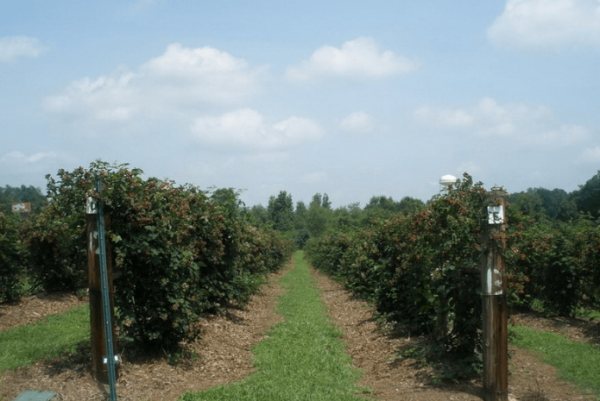

All creeping varieties should preferably be planted along natural or artificial supports. Most often these are all kinds of fences and trellises.
The main requirements for the soil are moderate moisture and air permeability.The most picky about the quality of the soil are bush varieties. Fertile soil, loam or sandy loam are necessary for kumanik. Rosyanika is less whimsical. It bears fruit well on heavier soils, but does not tolerate prolonged stagnation of moisture.
If the soil lacks the substances necessary for the optimal development of the plant, this will certainly affect its growth, yield and taste of berries. Therefore, when growing garden varieties of blackberries, special attention is paid to feeding.
The choice of location also depends on the correct neighborhood of cultures. The blackberry has a special feature: it is a nitrogen fixer. This indicates the ability of the shrub to enrich the soil with oxygen. Therefore, the apple tree is the best neighbor for him.
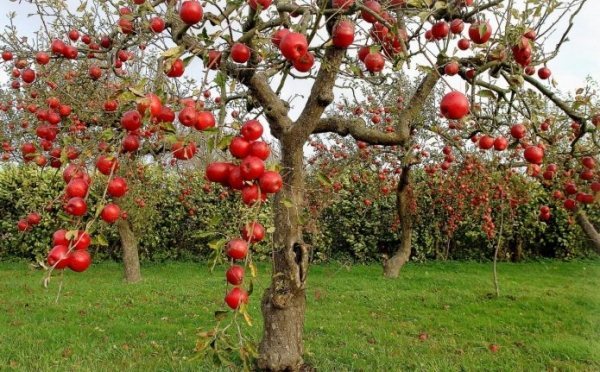

A tall tree nearby will protect the blackberry bushes from sudden gusts of wind
It is not recommended to plant blackberries next to raspberries, strawberries or strawberries. These plants have many common diseases and pests. Such a neighborhood can lead to the rapid reproduction of the most common pests of berry crops.
Advice! Blackberries prefer moderately acidic soils. If sorrel, horsetail and moss grow well on the site, liming of the selected area must be carried out before planting. For this purpose, dolomite flour is introduced at the rate of 350-500 g per 1 m2.
Gardeners reviews
Cultivation of thornless blackberries has obvious advantages: high yields, no thorns, easy maintenance. If for Siberia it is still necessary to look for suitable varieties of culture, then for central Russia their choice is wide.
The thornless blackberry bush has long occupied a leading position among its thorny counterparts. Gardeners from different regions note a number of undeniable advantages of the plant compared to other similar crops. Their positive reviews allow you to have no doubts about the right choice of a plant for planting.
Thornfree Blackberry is a unique herb with delicious, healthy, sweet berries. A great option for beginner gardeners. The shrub is unpretentious. It does not require a lot of knowledge, experience while leaving. Everyone can plant cuttings. Household plots of the northern, southern, central regions of Russia and other countries will be an excellent place for growing this variety.

